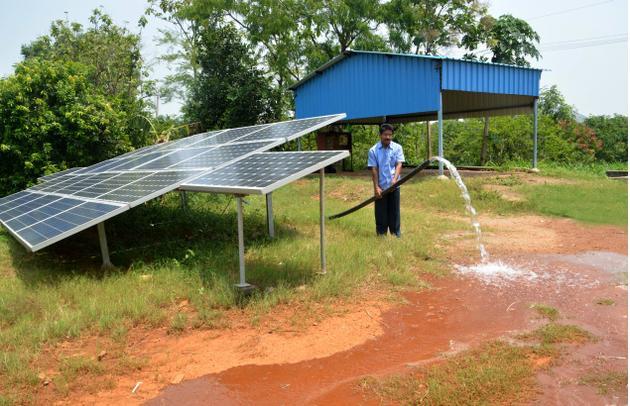Solar powered water pumps to save 100 water bodies in forests
 |
| Solar powered water pumps to save 100 water bodies in forests |
100 water holes will be refilled through solar water pumps
About 100 watering holes and lakes in forests across the state will be refilled through the use of solar water pumps this year. The Forest Department is launching this scheme to revive dried-up water bodies to mitigate the acute water crisis faced by wild animals in deep forests.
The project, costing `10 crore, will be funded under corporate social responsibility schemes while the deficit amount will be raised through the major works scheme.
The project, costing `10 crore, will be funded under corporate social responsibility schemes while the deficit amount will be raised through the major works scheme.
A solar pump can refill 50,000 litres of water
A few solar-powered pumps have already been set up in Nagarhole and Bandipur where partially dried-up lakes and tanks were recharged. In Bandipur, the pumps were set up in collaboration with WWF-India. Working 7-8 hours a day, a solar pump can refill a partially dried-up watering hole with almost 50,000 litres of water while allowing the excess water to flow downstream.
Each solar pumping unit costs `10 lakh and has been installed in Southekere and Kundakere in Omkar range of Bandipur National Park and Antarsanthe Range of Nagarhole National Park. According to park officials, this initiative has benefited big carnivores and herbivores as more than 50 per cent of water bodies had gone dry.
How cant solar pumps benefit the wild animals
Principal Chief Conservator of Forest (Head of forest force) K S Sugara explained that wild animals usually come out of the forests during the summer season or during droughts in search of water. If this new technique is utilised in protected areas, then water could be pumped to the lakes in the forest areas.
Some criticism about the solar water pumps system
However, criticizing the scheme, wildlife activists add, “If this project is initiated, borewells can be drilled in protected areas. In the long run, it will not only adversely affect the habitat but also disturb many species. Moreover, drought is a natural phenomenon, some animals may die while some may survive.
This is how nature balances the wild animal population. Why should we interfere with nature?” they asked.Wildlife activist G Veeresh added, “This has been installed in Nagarhole Tiger Reserve and is totally unscientific - if the forest department is providing water to animals then will they provide food too? If the population of wild animals increases, this will again cause an imbalance in the food chain. Such schemes and programmes are a sheer waste of precious resources.”















